Just as water is an essential element of sailing, its also vital to proper body function-yet staying hydrated underway is often taken for granted or given little consideration.
Drinking fluids isn’t just important to stave off seasickness or help a sailor rebound from a bout of mal de mer. Water and electrolytes are required for all of our bodys processes to run smoothly. Dehydration can rob muscles of strength and can fog the mind, compromising a sailors boat-handling ability and capacity to make tactical decisions.
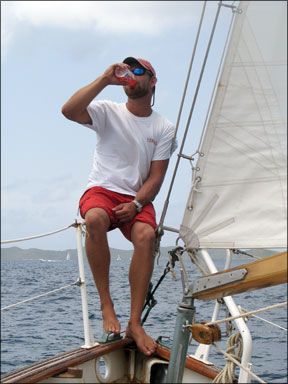
As the summer heats up this month, we were reminded that staying hydrated and healthy is as essential to a safe sail or a successful race as having the right gear on board. A persons body, during an average day in a temperate climate, loses approximately 2.5 liters of water, more if youre active or in a hot climate.
Dehydration occurs when the amount of water leaving the body is greater than the amount being taken in-that can result from sweating during a mid-day race or from heaving over the rail in the throws of seasickness during a voyage. Its easy to prevent: Just be sure to get enough of the right kind of fluids before, during, and after sailing. Knowing more about hydration tools (drinks) will make it easier-and no, beer or rum does not count.
Symptoms and Treatment
There are three main types of dehydration: hypotonic (the loss of electrolytes, especially sodium), hypertonic (the loss of water), and isotonic (the loss of water and electrolytes).
A dehydrated person can exhibit a range of symptoms, depending on the severity of the condition. Signs of a mild case may include headache, dry mouth, muscle cramps, nausea and vomiting, dizziness and fainting, heart palpitations, and visual “snow.” In heat-related cases, if the person is so dehydrated that there is not enough water to sweat and cool down the body, then heat exhaustion or heat stroke could occur.
If the situation worsens beyond mild symptoms, the person may experience fatigue, confusion, and weakness as the brain and other body organs receive less blood. In the most severe cases, coma and organ failure could occur, and serious electrolyte disturbances can lead to cardiac and neurological complications.
Minor symptoms should be treated by drinking water and stopping fluid loss by seeking shade, resting, or taking medication to stop vomiting. However, water does not replace the lost sodium and electrolytes that lead to dehydration. For more severe cases, its necessary to replenish the water and minerals, and in dire situations, intravenous rehydration therapy may be required.
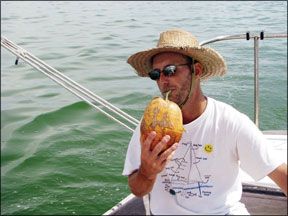
The Options
These days, the options for a refreshing, rehydrating beverage are endless: from plain tap water to vitamin-enriched flavored water, to sugary sports drinks, and vegetable or fruit juices.
We selected a cross-section of different types of drinks commonly marketed for athletes or others with added hydration demands to weigh the pros and cons of each, with the help and advice of published medical studies and input from Senior Dietitian Sharon Zurlnick of the New York Presbyterian-Weill Cornell Medical Center. We looked at sports drinks, vitamin-enriched waters, and coconut water.
Theres no right or wrong product in this group, but the best choice will depend on your personal taste and needs, as well as what type of sailing youre doing and where youre doing it. Look for the drink that strikes the right balance of sugars, carbohydrates, and sodium and other electrolyes to meet your needs-and of course, choose one that makes your tastebuds happy.
Water
Good ole H-2-O: We need it for survival. Our bodies are about 60- to 70-percent water; our blood is mostly water, and our muscles and organs all contain a lot of water. So its commonsense that in order to maintain proper hydration, water must be an integral part of dehydration prevention.
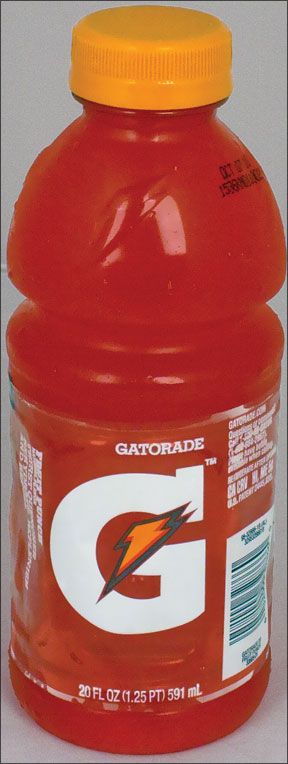
The biggest drawback of water-besides its boring flavor-is that it doesn’t contain the sodium, sugars, and carbohydrates that physical activity and sweating remove from the system. On the flip side, it also lacks the bad-for-you processed sweeteners, high calories, and chemical coloring some sports drinks have.
So how much water should we be drinking? The eight glasses per day quota we were all raised on is a good rule of thumb, but if youre on deck, under the blazing sun all day, or continuously hustling back-to-back sail changes, youll need to up your intake and add some other fluids or foods that replace the burned calories, sugars, and sodium. Some health experts recommend adding one eight-ounce glass of water for every 20 minutes you are active, and if youre drinking alcohol, you should drink at least an equal amount of water.
Sports Drinks
Gatorade and Powerade have long dominated the sports-drink arena, and are marketed toward athletes looking to stay hydrated. But as consumers have become more health-conscious, the makers of these brands have started offering “target” drinks aimed at specific consumers. For example, Gatorades Bring It line has added B vitamins, which the company claims boost energy, and its Be Tough line has added vitamin E for those seeking an antioxidant increase.
Nutrition and ingredients wise, Powerade and Gatorade are very comparable. “Both products use high-fructose corn syrup as a carbohydrate source, which we advise people to limit their consumption of,” explained our advising dietitian Zurlnick. She said that both also have more sodium and much less potassium than natural drinks like coconut water. Potassium, an important electrolyte, helps maintain the right balance of water in the body’s cells.
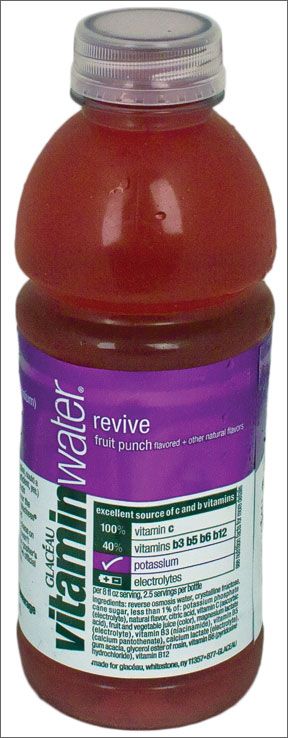
Gatorade and Powerade do provide more electrolyte-replenishing power than water, but not more than coconut or vitamin-enriched waters. The benefits of sports drinks over natural drinks include their numerous flavor choices and that they have higher carb contents, which is good for “extreme” athletes and others who burn a lot through activity, but this really isn’t a concern for most sailors. Some sports drinks also come bottled or as a powder. The small packets of powdered Gatorade are much easier to stow in a galley, ditch bag, or life raft than a case of 20-ounce plastic bottles.
The downside to sports drinks, in addition to their artificial coloring and sweeteners, is their high calorie content. Even Gatorades Low Cal line, has 50 calories per 8-ounce serving-thats the same calorie load as 11 ounces of coconut water.
Vitamin-Enriched Water
There are several brands of vitamin-enriched waters on store shelves, including those by SOBE and Glaceau. These are exactly what their name implies: water with an oomph. Depending on the brand and flavor, these are reverse-osmosis filtered-water products that have added vitamin C, B vitamins, zinc, chromium, taurine, and potassium.
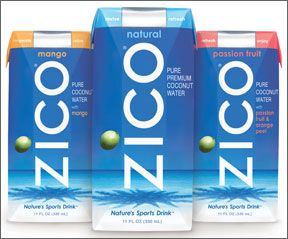
Unlike regular sports drinks, Glaceaus Vitamin Water has no sodium and it uses natural sweeteners like cane sugar and natural coloring from fruit and vegetable juices. Flavoring ingredients include fruit extracts and citric acid, an organic acid derived from citrus fruits.
While processed vitamin-enriched waters are a better hydration choice than artificial sports drinks, they still pack a comparable high-calorie punch: Per 8 ounces, Glaceau Vitamin Water has 50 calories, the same as some Gatorade products.
Coconut Water
Often referred to as “Natures Gatorade,” coconut water has been a staple in many cultures diets for centuries, but only recently has it gained popularity among American consumers as a natural alternative to chemical-laden sports drinks.
Not to be confused with coconut milk, coconut water comes from young, green coconuts and does not have the high-fat content that coconut milk has. The coconut is a member of the palm family-not a tree nut-so it can be consumed by those with tree nut allergies.
Coconut water is loaded with good stuff: It has lots of potassium (12 ounces contains more potassium than two bananas, according to one drink manufacturer) and is an excellent source of electrolytes.
“Consuming the natural amount of potassium and these necessary electrolytes before, during, and after exercise will help achieve proper electrolyte balance in the body, which will help prevent muscle weakness or severe muscle contractions,” Zurlnick said.
Dietitians and nutritionists have deemed coconut water “highly hydrating.” It has low acidity, no cholesterol, and no fat. (Unrelated tidbit: Coconut water is the only natural substance that can be safely injected into the human blood stream, according to Zico.)
The best way to drink coconut water, obviously, is straight from the nut. But given that most of us are without a neighborhood palm grove, there are many boxed and bottled brands on the market. We tested two of these, Zico and Hurricane Juices EQ Thirst Equalizer, for this review. For results of our taste test, see “A Matter of Taste.”
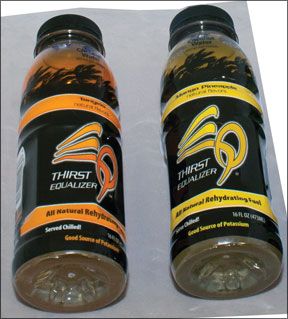
Some boxed coconut waters-like the Hurricane Juice-add cane sugar and fruit juices for flavoring, but others like Zico Natural and Vita Coco have only one ingredient: coconut water.
Bottom Line
Ultimately, what works best for any person is what that person will actually drink. Anything is better than nothing, but from a nutrition standpoint, some of the choices we looked at are better than others given a specific activity, environment, or sailors needs. The best choice will offer the right balance of water, electrolytes, carbohydrates, and vitamins.
For those whose style of sailing puts their activity level on par with a marathon runner, Gatorade should be considered. But for the average daysailor or cruiser, an onboard hydration regimen that includes regular water and coconut water is recommended. Water is essential to life, and coconut water offers true re-hydration without preservatives or artificial ingredients.
If your tastebuds require more flavor, try one of the flavored coconut waters, vitamin-enriched water, or regular water with a slice of orange.
Budget-minded sailors might have a hard time digesting the high prices of some of these beverages and would do well to stick to hydrating with regular water flavored with fruit slices. But, in our opinion, its still a good idea to keep a few boxes of coconut water on hand in case a crew member becomes dehydrated or is vomiting from seasickness.


































